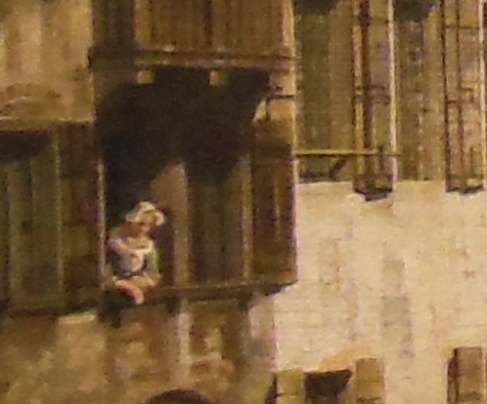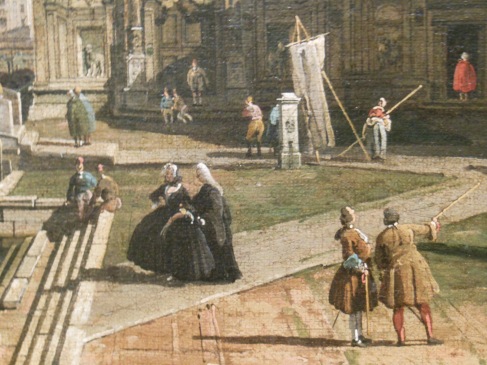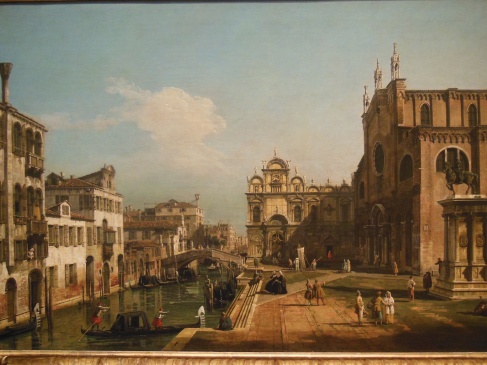My work in progress takes place in an agrarian village hidden beyond some strange mountains. The villagers are odd, with long-lived superstitions and the wrong idea about many things. There’s a village circle, and some farms, and the family cottage of my main character, Finnegan.
I have done a lot of thinking and drawing to get the setting right, making maps of the direction Finn would go to school, and the position of the barn and where the stream comes down to his pa’s field. I’ve listed the various small shops he’d see if he walked down the village road. I know the names and faces of some of the villagers that most impact his life.
I thought I had a good take on the setting for this novel. Then I went to the National Gallery of Art in Washington, D.C., where I was lucky enough to spend an afternoon with the jaw dropping, enormous oil landscapes from the 17th and 18th centuries.
Think light, infinite sky, and hilly land so vast you could walk for a month and not reach the castle that rises out of the blue mist on the horizon.
Think mountains so big they seem to hold up another level of sky, one filled with potent, boiling clouds spilling over endless rivers, dotted with boats and winding through city after city.
One enormous painting, The Campo di SS, Giovanni e Paolo, Venice, by Bernardo Bellotto (1743/47), featured an urban landscape so captivating I couldn’t walk away. I stared. I took photos. I stared some more. The museum docent started eyeing me. I walked away, but returned when he ambled to another room. I stared again.
The painting features a real Venetian square and basilica, Basilica dei Santi Giovanni e Paolo, bordered by the waterway Fondamenta Mendicanti. One of the geniuses of this painting is the extent to which the canal pulls your eye back toward the horizon, taking in the boats, apartments, bridges and the promenade. The other genius, and what compelled me even more than the structure of the canal and the finely wrought architecture, was the people.
This landscape was not just populated, it was activated by the people. They were boating,
watching the boats, looking out over the canal, hanging up a canvas,
hanging up a canvas,  arguing, pointing. This was a real place, with living people in it. The more I looked, the more living I noticed in this snapshot of a world.
arguing, pointing. This was a real place, with living people in it. The more I looked, the more living I noticed in this snapshot of a world.
Elizabeth George talks about the idea of landscape in her book on writing, Write Away:
“On the surface, it would appear that landscape and setting are the same creatures, identical twins given different names just to confuse the beginning writer. This, however, would not be the truth since setting is where a story takes place–including where each scene takes place–while landscape is much broader than that…Landscape in writing implies much the same as that which is implied by the word when it’s used to refer to a location in a country: It is the broad vista into which the writer actually places the individual settings of the novel, sort of like the canvas or other medium onto which a painter has decided to daub color.
“You need to think about the landscape of your book because if you’re able to make the landscape of place real, you can make the land itself real, which gives you a leg up on making the entire novel real for the reader.” http://www.elizabethgeorgeonline.com/books.htm
When I work on my novel, I want to think this way about my landscape, not only what it looks like, but what’s happening in it. Who’s there? Who are they talking to? What sounds are rising up in the background? What smells? What’s in the distance?
Thinking like a painter of a huge canvas will make my story come alive, just as this painting did for me.



Linden, this post opened my eyes to the many ways books can benefit from well-conceived and original settings. It was fascinating to read your definition of the difference between setting and landscape. It was, in fact, an epiphany for me, as I am a writer who tends to ignore setting in my scenes in order to focus on other things I believe are more interesting. But now, I’m newly inspired to create authentic landscapes for my fiction. Thank you for this fascinating piece.
Very insightful, Linden. We pick up cues from so many places, if we just let our minds wander a bit. Your setting is going to very rich, indeed!
“Landscape,” the word alone is fantastic and evocative. Wow, Linden, fun to read two amazing posts by you on a Monday morning:-D
Lovely, Linden.
LInden..this is beautiful..